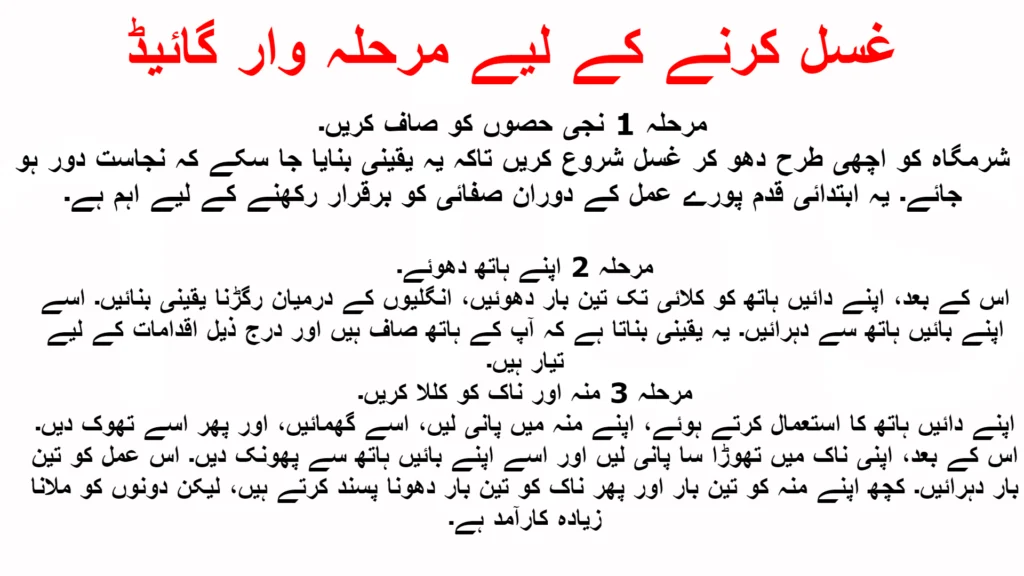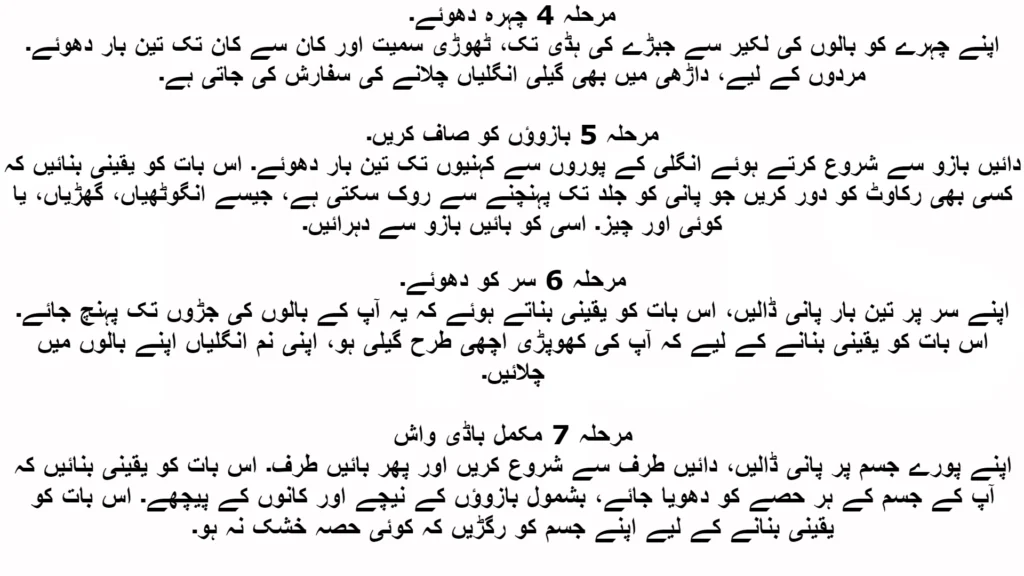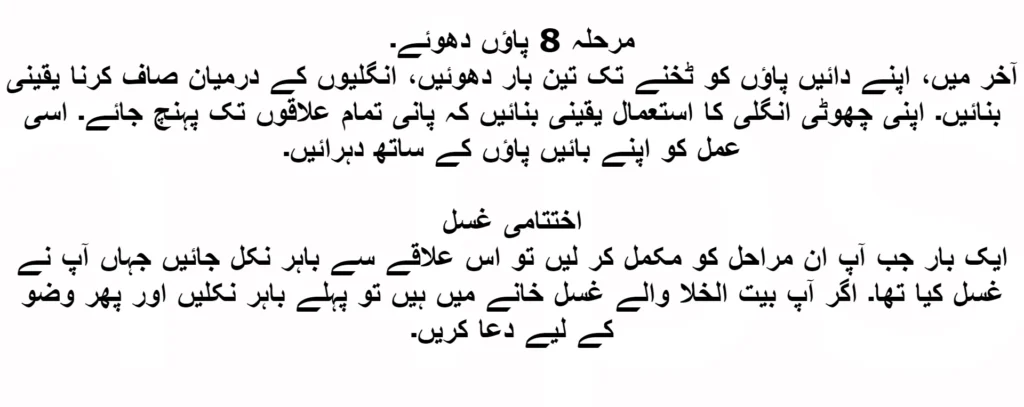In the fast-paced modern world, maintaining our spiritual purity can sometimes feel like an afterthought. However, staying spiritually clean is an essential aspect of Islam. One crucial practice in this regard is performing Ghusal, a full-body ritual purification that ensures we are in a state of cleanliness before engaging in prayer and other acts of worship.
This guide will walk you through the steps of performing Ghusal, offering clarity and ease for both men and women. By the end, you’ll be well-versed in this vital Islamic practice, ensuring you can perform it confidently and correctly.
Ghusal Karne ka Tarika In Urdu For Male & Female



The Significance of Ghusal
Ghusal is more than just a physical cleanse; it’s a spiritual one too. It helps Muslims prepare for worship, ensuring that they are in the purest state possible when approaching Allah. Whether it’s after marital relations, menstruation, or any other state of major impurity, Ghusal serves as a means to cleanse both the body and the soul.
Intentions Matter
Before beginning Ghusal, it’s essential to set your intention (niyyah) in your heart. This is not something that needs to be said aloud; it’s a personal, internal declaration that you are performing this act for the sake of Allah. Start by saying BISMILLAH.
Step-by-Step Guide to Performing Ghusal
Step 1 Cleanse the Private Parts
Begin the Ghusal by thoroughly washing the private parts to ensure any impurities are removed. This initial step is crucial for maintaining cleanliness throughout the process.
Step 2 Wash your Hands
Next, wash your right hand up to the wrist three times, making sure to rub between the fingers. Repeat this with your left hand. This ensures that your hands are clean and ready for the following steps.
Step 3 Rinse Mouth and Nose
Using your right hand, take water into your mouth, swirl it around, and then spit it out. Then, take some water into your nose and blow it out using your left hand. Repeat this process three times. Some prefer to rinse their mouth three times and then their nose three times, but combining the two is more efficient.
Step 4 Wash the Face
Wash your face from the hairline to the jawbone, including the chin and from ear to ear, three times. For men, it’s recommended to run wet fingers through the beard as well.
Step 5 Cleanse the Arms
Starting with the right arm, wash from the fingertips to the elbows three times. Make sure to remove any obstacles that might prevent water from reaching the skin, such as rings, watches, or any other items. Now, let’s repeat the same procedure with the left arm.
Step 6 Wash the Head
Pour water over your head three times, ensuring it reaches the roots of your hair. Run your damp fingers through your hair to ensure that your scalp is thoroughly wet.
Step 7 Full Body Wash
Pour water over your entire body, starting with the right side and then the left. Ensure that every part of your body is washed, including under the arms and behind the ears. Rub your body to make sure no part is left dry.
Step 8 Wash the Feet
Finally, thoroughly wash your right foot up to the ankle three times, ensuring to clean between the toes. Use your little finger to ensure the water reaches all areas. Repeat the same process with your left foot.
Concluding Ghusal
Once you have completed these steps, step out of the area where you performed Ghusal. If you are in a bathroom with a toilet, exit first and then say a dua for Wudhu.
How Hazrat Muhammad (PBUH) Performed Ghusal
According to the hadeeth of Aishah (radyAllaahu anhaa) reported in Al-Bukhaaree and Muslim, the Prophet (PBUH) would start his Ghusal by washing his hands. He would then wash his private parts, perform a partial Wudhu, and pour water over his head and body. This method is both simple and effective, encapsulating the essence of thorough cleansing.
Special Considerations for Women
Ghusal During Menstruation and Nifass
For women, the process of Ghusal is essentially the same as for men. However, there are specific considerations during menstruation or postpartum bleeding (Nifass). Women with braids do not need to undo their hair when performing Ghusal for Janaabah but should do so if they are performing it due to menstruation or Nifass.
Additional Cleansing Steps
After completing Ghusal, it is recommended for women to take a piece of musk-scented cloth and wipe their private parts three times. This practice, recommended by the Prophet (PBUH), adds an extra layer of cleanliness and fragrance.
Conclusion
Performing Ghusal is a beautiful blend of physical and spiritual purification. By following these steps, you can ensure that you are in a state of purity, ready to engage in your daily prayers and other acts of worship. Remember, the key to a proper Ghusal lies in the intention and the thoroughness of your actions.
For those who wish to deepen their understanding of Islamic practices, consider consulting with a knowledgeable scholar or joining a local study group. Purity in Islam is not just about following steps; it’s about understanding the essence of the actions and the spirituality behind them.
By performing Ghusal correctly, you are not just cleansing your body; you are purifying your soul. This practice, rooted in the teachings of the Prophet Muhammad (PBUH), is a testament to the importance of cleanliness in Islam. May your efforts in maintaining purity bring you closer to Allah and enrich your spiritual journey.

